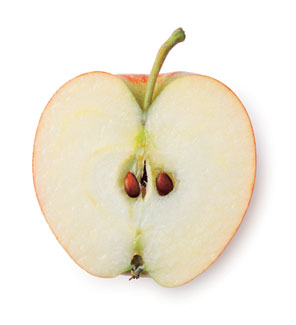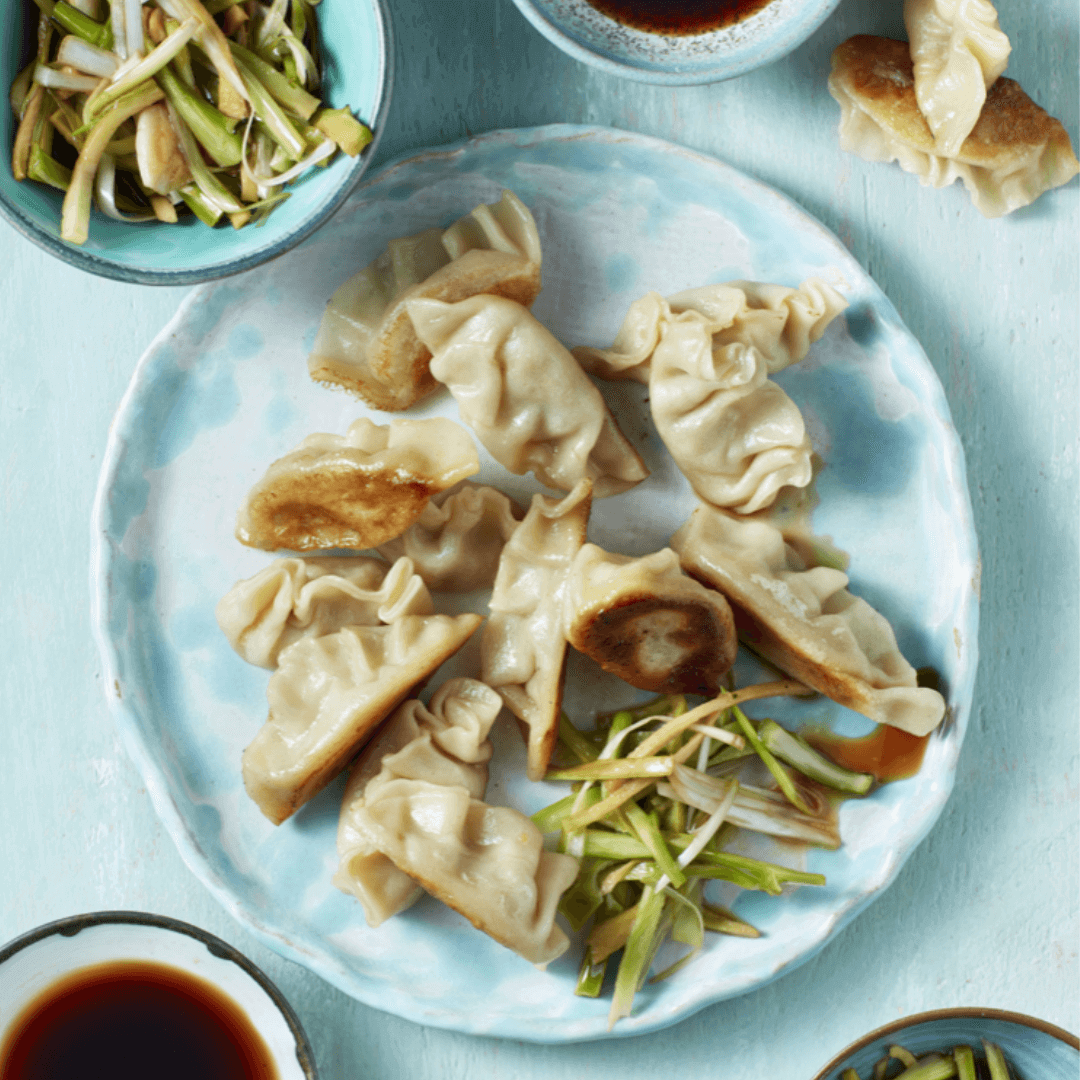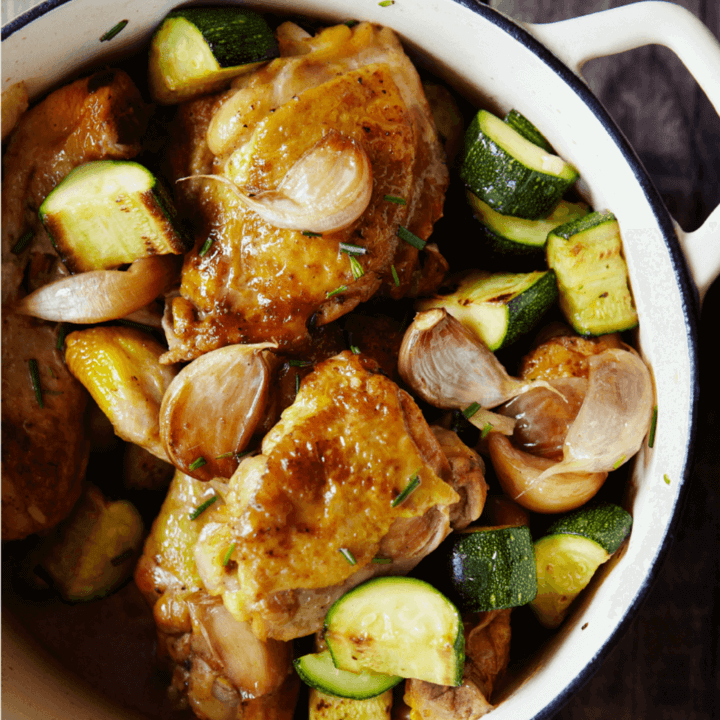
Fig & Lentil Salad from Virtually Vegan
Summer and salad go hand-in-hand and this offering from Heather Whinney’s Virtually Vegan is a fresh, sweet, figgy take on a summertime staple. Complete with a harissa
 Do you need to clean up your diet? Consider this: Over the course of a normal day, the average American consumes more than 180 chemical additives as a result of eating processed food, or unwashed fruit and vegetables – that’s more than 65,000 separate doses of chemical in a year!
Do you need to clean up your diet? Consider this: Over the course of a normal day, the average American consumes more than 180 chemical additives as a result of eating processed food, or unwashed fruit and vegetables – that’s more than 65,000 separate doses of chemical in a year!
Add to that the fact that certain cooking methods rob healthy foods of their nutrients, and could even turn them cancerous, and you have plenty of reasons to follow a clean diet.
The problem is, how do you start? With additives and chemicals seemingly everywhere, a clean diet can seem quite daunting. That’s why Max Tomlinson has put together this 6 step guide from Clean Up Your Diet to show you how to have a truly healthy diet!
Looking for a way to get rid of the unhealthy toxins that are part of modern life? Try Max’s Weekend Detox Plan.
“Low fat” and its friends. Claims such as “low fat”, “reduced sodium” and “high fibre” tend to be commercially driven with no real nutritional basis or strict legal definition. “Lite” and “light” also have no legally binding definition, and are used freely by food manufacturers who are keen to cash in on no-fat, low-sugar dieters all over the world (and there are millions of them!). A clean diet, rich with pure foods, does not need to enhance, remove or replace any of the naturally occurring substances in foods. Fibre is plentiful anyway in pure foods; bad fats, excess salt and simple sugars are scarce. In fact, the pure-fooder has no reason to diet, because his or her diet is in perfect balance, which should mean that his or her weight is in perfect balance, too.
Genetically modified (GM). If you spot the word “modified” on a label, don’t buy the product. Genetically modifying food is a brand new science, and this makes me nervous: it takes decades for us to be certain of the effects of food modification on the human body. In addition, GM-containing foods are not always labelled as GM. Many animals are given GM animal feed, but their meat doesn’t have to carry a GM label. The only way to be certain to avoid GM meat and poultry is to go organic.
 Commercial farming methods use an array of chemicals to protect crops and promote growth in plants and animals. Some of these manmade chemicals are now thought to cause disease (including some cancers), as well as hyperactivity in children, and asthma, eczema and a host of other illnesses; others upset our hormonal balance, leading to problems such as infertility or mood swings. Organic farmers avoid using toxic chemical sprays on their crops, and their animals are kept in more natural, free-range conditions and are fed on natural foods. In addition organic meat does not come from animals that have been “beefed up” using chemical hormones or antibiotics.
Commercial farming methods use an array of chemicals to protect crops and promote growth in plants and animals. Some of these manmade chemicals are now thought to cause disease (including some cancers), as well as hyperactivity in children, and asthma, eczema and a host of other illnesses; others upset our hormonal balance, leading to problems such as infertility or mood swings. Organic farmers avoid using toxic chemical sprays on their crops, and their animals are kept in more natural, free-range conditions and are fed on natural foods. In addition organic meat does not come from animals that have been “beefed up” using chemical hormones or antibiotics.
Organic foods are strictly regulated by government agencies. As a result you can be sure that when you buy organic you are buying food that has:
• No nasty chemical additives
• No pesticides or insecticides
• No genetically modified (GM) ingredients or additives
• Higher nutrient levels, including vitamin C, and important minerals such as calcium
• Far fewer pharmaceutical drugs pumped into it during animal husbandry (organic farmers use drugs on their animals only when they are sick; whereas conventional farmers may use drugs to promote animals’ growth)
• Less of an impact on wildlife and the environment
One great way to get your organic shopping – and to support local producers at the same time – is to sign up to a weekly organic fruit-and-veg box scheme and get a delivery directly from the farm.
It is so easy nowadays for most of us to eat whatever we want, whenever we want it. You need soft, fresh, ripe summer berries in mid-winter? No problem – your local supermarket will have them in stock. The concept of eating what is in season disappeared with the advent of modern food supply and transport, but eating with the seasons is a fundamental naturopathic philosophy and is important because the body needs and craves certain foods depending on the time of year. Winter foods need to be rich and warming, with soups made from organic beans, ginger, herbs, garlic and root vegetables. Summer foods need to be lighter, reflecting the warmth of the time of year. My summertime favourites are massive rainbow-coloured salads and light stir-fries with grilled, organic fish. On the whole, seasonal foods have travelled shorter distances to reach your table and so have suffered less nutrient loss than those that are out of season. You will also find your foods at their tastiest as well as at their most affordable.
Farmers Markets Take a look in your local newspaper to find a weekly farmers’ market in your area. Visit it as part of your weekly shop and choose from the great array of seasonal, fresh foods on sale. Not all the produce at your local market will be organic, of course, but at least you can buy what is truly in season and can also ask the grower directly whether or not he or she overdoes the chemicals on the non-organic produce.
There is no question: fresh is best. Some important vitamins (including vitamins A and C) degrade over time as a result of exposure to light, heat and oxygen. A report conducted by the American Dietetic Association recommends that we should consume orange juice as soon as possible after we buy it, because the vitamin-C content decreases more and more rapidly the closer the product gets to its expiry date. In two weeks the level of vitamin C in one carton generally fell from 65 milligrams per serving to 45 milligrams. The level fell again to about 36 milligrams after four weeks – a reduction of close to 50 per cent. So, when you have a cold or the flu, drinking commercial orange juice to pack your body with vitamin C might not be the best option. However, freshly squeezed orange juice, made from ripe, organic oranges, will supply all the vitamin C you need to fight off the bugs. Apply this attitude on freshness to all your fruit and vegetables and your nutrient intake will soar!
 Most commercial food-processing methods involve using heat to cook the food and to destroy any resident bacteria, thus prolonging shelf-life. This process destroys or damages some important vitamins and other nutrients that are very sensitive to heat. For example, oil can oxidize (become rancid) when exposed to heat, altering its flavour and smell, and diminishing its nutritional value. More importantly, oxidation produces free radicals, which scientists believe play a role in ageing, as well as the development of cancer and other degenerative diseases.
Most commercial food-processing methods involve using heat to cook the food and to destroy any resident bacteria, thus prolonging shelf-life. This process destroys or damages some important vitamins and other nutrients that are very sensitive to heat. For example, oil can oxidize (become rancid) when exposed to heat, altering its flavour and smell, and diminishing its nutritional value. More importantly, oxidation produces free radicals, which scientists believe play a role in ageing, as well as the development of cancer and other degenerative diseases.
The higher the temperature at which you cook your food, and the longer you cook it, the greater the nutrient loss. According to some sources, cooking to the point of browning or charring creates compounds that are carcinogenic (may cause cancer). Charring proteins (meat, chicken and fish) creates a potentially harmful chemical called heterocyclic aromatic amine, which has been linked with an increased risk of breast cancer among women. Cooking food can be a dangerous job! This all sounds very gloomy, but remember that all you need to do to minimize the risks is to eat more raw or lightly cooked produce, and reduce your exposure to charred vegetables and meats. Always cook meat such as chicken all the way through, but don’t overcook it. What follows is my guide to cooking pure foods in the right way.
• Boiling This is my least favourite method of cooking. Boiling toughens the protein in eggs, softens the plant fibre cellulose in cereals, vegetables and fruits, and destroys nutrients. The biggest loss is of minerals into the water. The only vegetable that requires boiling is the potato – steam everything else.
• Deep-frying Deep-frying involves fully immersing food in hot oil. The main problem with it is the type of oil we use to deep-fry: cooking oil. This is made by treating oils pressed from seeds with chemicals that refine, bleach and then deodorize the oil. This process removes the small percentage of natural plant chemicals that have all of the major health benefits. In addition, the oil degenerates at high temperatures, oxidizing and creating cancer-causing free radicals. This is why if you have to deep-fry, you should always use fresh oil, which has not already oxidized. (If you are shallow-frying, use olive oil, which burns at much higher temperatures and so is safer for longer.)
• Steaming Light steaming is the best way to cook vegetables and fish. Food is put into a steamer, and, as the water in the lower container boils, steam rises and cooks the food in the upper, perforated pan. Steaming is preferable to boiling as the food loses no minerals at all, and the process does less damage to the food’s fragile vitamins and enzymes.

• Dry-frying This is cooking without oil in a well-heated, non-stick frying pan (skillet). Add a little water and then add your meat, fish, chicken or vegetables. After a short while, meat and poultry release their own juices, providing plenty of moisture to prevent burning; as will vegetables. Do not use metal utensils as this damages the non-stick surface in the pan and you end up eating the coating!
Try not to overcook your vegetables. They should be crisp and colourful so that they retain their natural flavour and nutrients.
• Stir-frying Stir-frying involves frying food very quickly over a very high heat in a lightly oiled pan (skillet). It is important to use a good-quality olive oil and not to let the oil burn. Burned oil contains chemicals called free radicals (yes, those again!), which are bad for your health).
• Oven Roasting The secret to healthy roast vegetables, fish, chicken and meats is not to burn or char them, as this may produce carcinogenic compounds. Bear in mind that the longer you cook food for the more nutrients are lost, so it pays to steam your food a little first, partially cooking it quickly, and then to finish it off in the oven.
• Grilling (Broiling) This is a great way to prepare fish and lean meats. Pay attention to cooking times and do not burn or char the food. Allow meats to drain as they grill (broil) as this gets rid of excess saturated, unhealthy fats.
• Raw I am not in favour of a totally raw diet (apologies and respect to anyone who is a raw-fooder), but most of us certainly need to increase the amount of raw food that we eat so that it constitutes about half of our daily intake. Raw, organic salads, fruit and vegetables contain an abundance of vitamins, enzymes (the catalysts for the hundreds of biochemical reactions that occur in the body) and phytochemicals (natural plant nutrients that have a powerful protective action on the body).
Wheat, rye, oats, rice and barley are some of the mainstays of the modern diet. In their wholegrain, natural form, these cereals are a fantastic and very nutritious food. However, modern milling techniques, and the huge worldwide demand for refined, white-flour products, has seen a drastic decline in the nutrient levels in our breads (see below), pastas and other cereal-based foods. The sugars in refined grains release quickly into the blood stream, contributing to disorders such as diabetes and to weight-gain; they are also one of the major causes of the energy highs and lows we might experience during a day, which often lead to unhealthy snacking. Healthy brown rice, wholemeal pasta, wholemeal brown bread and wholemeal flour are all part of the clean, pure-foods diet.
To see just why wholegrain is so important, it pays to take a look at that most humble of foods – bread. Wholegrain wheat is made up of three layers:
•Bran This is the outer, hard coating of the grain of wheat. It is a rich source of dietary fibre (which is essential for the health of the bowels) and the vitamins B1, B2, B5 and B6 (which help the body to produce energy and assist with the correct functioning of the nervous system).
• The Germ This is a nutrient, oil-rich kernel containing vitamins E, B1, B2 and B6. (Vitamin E is an important antioxidant, which helps to protect us against cancer and ageing).
• The Endosperm This is the bulk of the grain, which supplies us with protein and carbohydrate. These are essential macronutrients that encourage our body to grow, heal and repair and provide fuel for energy, respectively.
Our ancestors ate the “whole” grain, ground up to make nutrient-rich wholemeal breads and other wholegrain products. While modern, refined bread does supply carbohydrate and protein (macronutrients), the refining process removes the outer bran layer and the inner germ, taking with it many of the micronutrients– the fibre, half of the B5, 70 per cent of the B2, most of the B6 and most of the B1.
The clean diet should be healthy for the environment as well as for your body. Over-fishing is now seen by marine scientists as the single greatest threat to marine wildlife and our oceans. Many fish stocks are in a state of serious decline, with some common stocks on the verge of collapse. The Marine Conservation Society UK has put together a list of the fish from all over the world that appear to be in immediate danger. They include Atlantic cod and Atlantic salmon, as well as snapper, swordfish and tuna (unless it’s skipjack tuna, and caught using a pole and line rather than nets). Try to buy fish that is caught at sustainable levels, such as Pacific, or organically farmed, salmon; flounder; Dover and lemon sole; and Pacific cod.

Summer and salad go hand-in-hand and this offering from Heather Whinney’s Virtually Vegan is a fresh, sweet, figgy take on a summertime staple. Complete with a harissa

Too Good to Waste by Victoria Glass is THE guide to getting the very most out of your food, in the most delicious way possible! So much

Today we’re sharing a much coveted Real Bread: Slow Dough recipe – Cinnamon and Hazelnut Knots! These sweet knots are beloved all over Scandinavia, whip

We’re gearing up for the publication of French Countryside Cooking by Daniel Galmiche, coming your way on May 14th (pre-order your copy right here)! To celebrate, we’re sharing

Watkins Media Limited
Shepperton House unit 11
89 Shepperton Road
London, England
N1 3DF

Watkins Media Limited
Shepperton House unit 11
89 Shepperton Road
London, England
N1 3DF